The Philadelphia Flyers have enjoyed Claude Giroux’s services for over a dozen years but never were they luckier than during the 2017-18 season when he exploded for a career-high 102 points.
Related: Every NHL Team’s All-Time Best Goal Scorer
What makes that total particularly impressive is that Giroux failed to top 73 points in any of his previous three seasons. He was coming off one of the least productive seasons of his career, with just 58 points in 2016-17. It was duly impressive that he increased his point production by nearly 76% in the following season.

There are a lot of hockey-related reasons that could explain Giroux’s spike in production and his subsequent decline in the next two seasons. Before getting into that though, let’s explore a reason unrelated to hockey: chance.
Was It Chance?
I confess that it’s been a while since my high school stats class, so please bear with me as I try to recall some of the basics.
One tool we can use is the p-value. The p-value tells us the probability of observing a test-statistic as extreme or more extreme than the value observed. In our case, the test-statistic will be a t-score, which is calculated by subtracting a sample mean from a value and then dividing the result by the sample standard deviation.
Now back to hockey. For the purposes of this analysis, we will only consider the seasons when Giroux played at least 80% of the season. He has recorded ten such seasons, averaging 74 points. Therefore, 74 will be our sample mean and 102 (his point total in 2017-18) will be our value. Lastly, our sample standard deviation is 17.91957 which tells us on average by how much Giroux’s season point total differed from 74 in any of those ten seasons.
Using these three numbers, we reached a t-score of 1.56. Next, we used the 1.56 to calculate the p-value. This told us how likely it was to observe a t-score as extreme as 1.56. It turns out the p-value is .076. In other words, assuming Giroux averages 74 points per season, then we can expect him to record at least 102 points in a season just 7.6% of the time.
Most statistical textbooks will tell you that a p-value greater than .05 is not statistically significant, which means Giroux’s amazing season might have been due to chance. Some more liberal interpretations will tell you that any p-value less than .10 is statistically significant. If we use this second interpretation then, yes, Giroux’s output in 2017-18 was significant and must be explained by factors other than chance.
Now, for the fun part, let’s take a look at some hockey-related factors which could explain Giroux’s 2017-18 season.
Team Strength
The first is team strength. The Flyers were very good in 2017-18. Their 98 points were good enough to earn third place in the Metropolitan Division and a guaranteed spot in the playoffs. In the previous season, the Flyers finished sixth in the Metro with 88 points and failed to make the postseason.
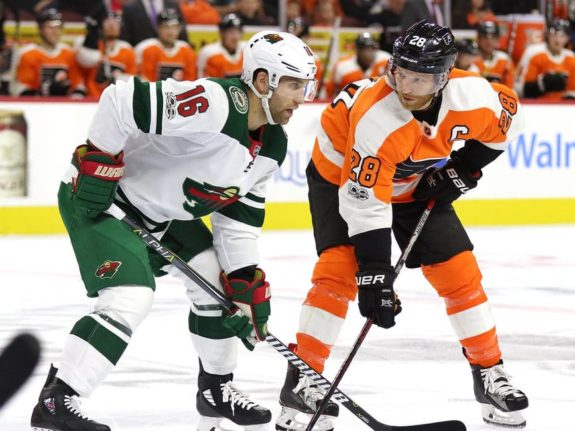
In fact, those 98 points were the most since notching 103 in the 2011-12 season. That season also happened to be when Giroux recorded his previous career-high of 93 points. I do not mean to suggest that Giroux’s point totals are directly correlated to the Flyers’ success, but there is probably some association.
Related: Rangers’ Most Impactful Trades of All-Time
It makes sense that when a team is playing particularly well, its star players will record more points. Of course, this isn’t always the case. For example, last season, Patrick Kane scored 110 points, ranked third in the NHL, on a mediocre Blackhawks team that failed to qualify for the playoffs.
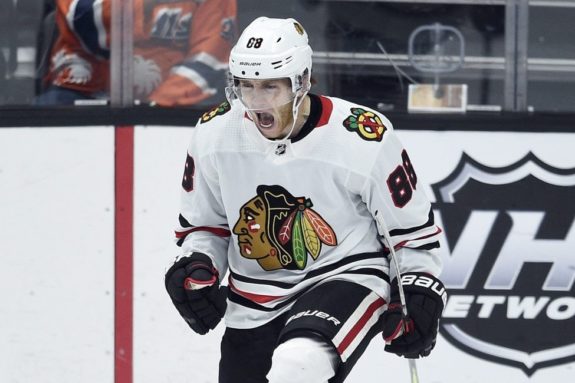
Still, we have to imagine that production from star players and team success are correlated to some degree. Just look at last season’s NHL point leader Nikita Kucherov who played on the Presidents’ Trophy-winning Tampa Bay Lightning.
Giroux’s Supporting Cast
Outside of individual skill and development, this is probably the most important hockey-related explanation for a player’s success. A player can only be as good as his teammates allow. Wayne Gretzky might not have been known as “The Great One” if his NHL teammates had been bunch of Pee Wee players.
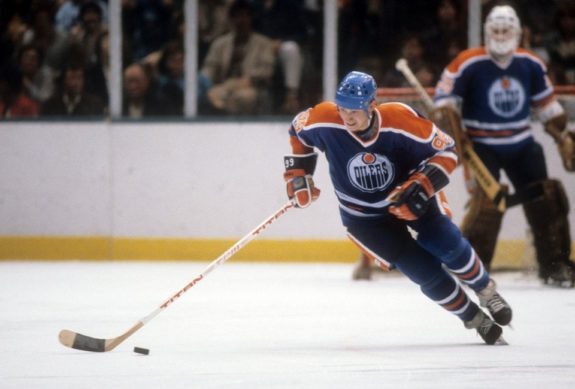
The same goes for Giroux. His 102 points in 2017-18 came from 34 goals and 68 assists. Without skillful teammates, he wouldn’t have had players to feed him the puck or to set up for goals. After Giroux, the Flyers’ top six point-getters that season were Jakub Voracek (85), Sean Couturier (76), Shayne Gostisbehere (65), Travis Konecny (47), Wayne Simmonds (46), and Ivan Provorov (41).
Of those six, a remarkable four recorded their career-high point totals that season, as well. Some were playing at another level. Gostisbehere’s 52 assists were 20 more than his previous career-high. I mean no disrespect, but I would be shocked if he tops 50 assists again, let alone 40.

Many of Giroux’s teammates were playing some of the best hockey of their careers in 2017-18, so it is little surprise that Giroux had such a strong season. It’s also little surprise that his teammates did not have as strong a season in 2016-17, and thus neither did he.
Related: Cup-Winning Capitals – Where Are They Now?
Outside of Giroux, the Flyers’ top six point-getters combined for 273 points in 2016-17. In 2017-18, that number was 360. The next season, Giroux’s point total dropped a bit to 85. Meanwhile, the Flyers’ next six top point-scorers also dropped their production and combined for 311 points.
Like team strength, a supporting cast won’t always correlate perfectly with individual success, but it offers some explanation.
Other Factors
Here, we could go on for a while. We could talk about individual skill and development as a reason for Giroux’s success in 2017-18. Usually, that would be a key factor in any player’s career year. In this case, however, it probably isn’t.
The 2017-18 season was Giroux’s tenth in the league. Unless he gained speed or developed a more accurate shot or a stronger pass, which had been lacking in his previous nine seasons, this likely isn’t a valid explanation. It could explain how he rose from 47 points to 76 points in his third year in the league, but it is safe to assume that he didn’t develop any significant skills in his tenth year, at least not to explain a 76% increase in points year-over-year.
Another explanation could be coaching. Top coaches will often bring out the best in their players. The only problem here is that Giroux had the same head coach in 2017-18 (Dave Hakstol) as he did in the previous two seasons when he recorded significantly fewer points.
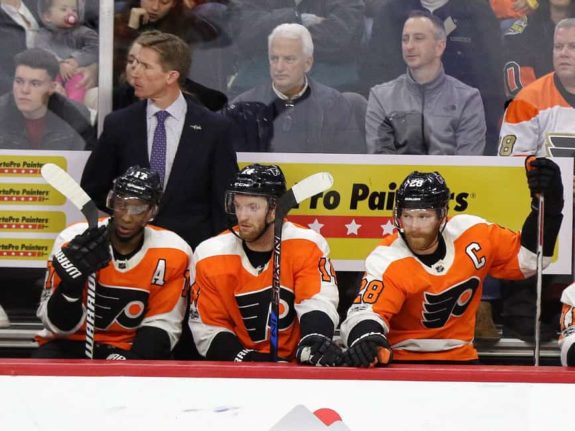
Now Hakstol did bring in Kris Knoblauch as a new assistant coach and power-play architect during the 2017-18 season, but it is hard to imagine an assistant coach having such a profound and immediate impact on a star player. It’s also possible that Hakstol and his staff devised new plays for Giroux and Co. during the 2017-18 season, but whatever they designed couldn’t have been that great because Hakstol was fired midway through the following season.
Final Assessment
There’s an endless list of possible factors for Giroux’s dominant 2017-18 season, so I won’t go on. Ultimately, I would return to the first three – chance, team strength and supporting cast – as the main reasons.
The fact that the Flyers were a good team that season and had a strong supporting cast for Giroux undoubtedly contributed to his career year. If the Flyers were bad enough to be blown out by opponents, Giroux wouldn’t have had so many points.
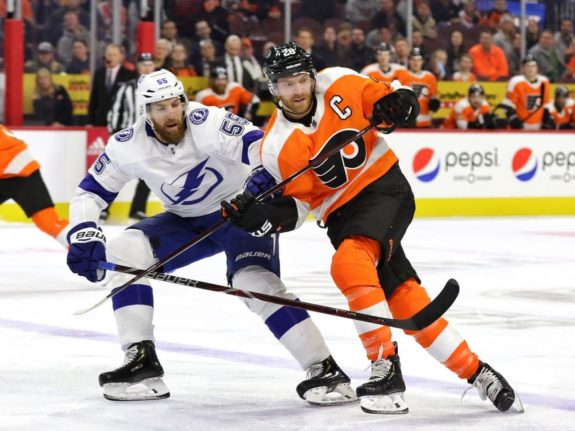
So, we could attribute Giroux’s dominance in 2017-18 to those two factors, but I think it would be wrong to not also credit chance. Again, if we consider the .05 significance level then, yes, Giroux’s output could be due to chance. Perhaps he benefitted from the occasional lucky bounce or fortuitous blunder from an opponent. Of course, the .076 p-value calculated above is close to .05 and falls within the .10 significance level, so it’s safe to assume there were other factors at play, like team strength and his supporting cast.
Therefore, Giroux’s 2017-18 season may have been an anomaly in the sense that he benefited from an unusually high level of team strength and supporting cast, but not an anomaly if we give enough credit to chance and the fact that, as such a skillful player, he is capable of randomly exploding in offensive production.
Anomaly or not, Giroux will happily accept his performance from that season. Now, if he can only have a few more dominant seasons and solidify his shot at a Hockey Hall of Fame bid.